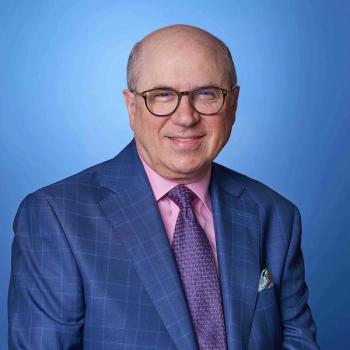
- Psychiatric Times Vol 15 No 8
- Volume 15
- Issue 8
Will Guidebook Assure Death With Dignity?
A new booklet released in April of this year provides, for the first time in modern medical history, a road map for ending life with physician assistance. Entitled The Oregon Death With Dignity Act: A Guidebook for Health Care Providers, the publication was the product of a two-year project sponsored by the Center for Ethics in Health Care at the Oregon Health Sciences University in Portland.
A new booklet released in April of this year provides, for the first time in modern medical history, a road map for ending life with physician assistance. Entitled The Oregon Death With Dignity Act: A Guidebook for Health Care Providers, the publication was the product of a two-year project sponsored by the Center for Ethics in Health Care at the Oregon Health Sciences University in Portland, involving a 25-member multidisciplinary task force.
"Without endorsing or opposing the principles embodied in the Death With Dignity Act," the group wrote, "the Task Force has developed this guidebook as a collective response to its enactment..Underlying this work is the assumption that regardless of the health care provider's personal view on physician-assisted suicide or the Act itself, open communication, consideration of comfort needs, and respect for divergent views are necessary components of care."The effort comes none too soon. According to published reports in Portland's Oregonian, 42 individuals have requested physician-assisted suicide since last October, and at least two individuals have died after taking a lethal dose of barbiturates prescribed by their physicians. Interestingly, of the 42 requests, four individuals decided to accept hospice care after making their requests, while another two patients reported "greatly improved" palliative care after making the request. The vast majority of those making requests for assisted suicide never completed the process, either because they were not qualified under the act or because they died of their illnesses.
The guidebook was designed not to be a recipe book for physician-assisted suicide, but to guide clinicians around the ethical, legal and practice pitfalls encountered when responding to patient requests. Its 91 pages succinctly cover a broad range of topics- from the "meaning behind a patient's request" to "liability and negligence" -offering a set of guidelines at the end of each chapter to assist the practitioner.
One of the more hotly debated issues surrounding the Death With Dignity Act is its failure to require a mental competency examination prior to prescribing a lethal dose of medication to the terminal patient. Rather, an assessment occurs only if the attending or consulting physician (the law requires the consensus of two doctors) believes that the patient may suffer from "a psychiatric or psychological disorder, or depression causing impaired judgment."
Conceding that Oregon psychiatrists are divided on the ethical permissibility of physician-assisted suicide, and that they have yet to develop competency standards for assessing patients who have made a request, the task force nevertheless strongly recommended that physicians seek a mental health consultation for the requesting patients.
Pointing to the fact that Oregon primary care physicians have "appropriately expressed doubt about their ability to diagnose depression in these patients," authors of the guidebook recognized the unique abilities of psychiatrists and psychologists to treat mental illness and to help manage other psychosocial, medical and economic factors that could be motivating the request for a lethal dose of medication.
"The mental health consultant has two roles," the guidebook says. "The first, as outlined in the Act, is to determine the patient's specific capacity to make the decision to hasten death by self-administering a lethal prescription. The second, a traditional role, is to evaluate for any remediable sources of suffering."
Charles Hofmann, M.D., a Baker City, Ore., internist, was the president of the Oregon Medical Association during the contentious period last year when the Death With Dignity Act finally became law. He said the task force did a "tremendous job" with the guidebook by considering physician-assisted suicide within the broader context of appropriate palliative and end-of-life care. "The guidebook has taken some of the red-flag aspects of physician-assisted suicide away," Hofmann said.
Nevertheless, he is concerned that the abuses predicted by opponents of physician-assisted suicide may end up occurring. "I am slightly more comfortable, but I still have a large amount of discomfort with the whole idea of public policy sanctioning this kind of procedure," Hofmann said. "That comes from seeing even the most [well] intended and well thought-out steps taken in the public policy arena end up having so many undesired consequences."
Richard H. Angell, M.D., a Portland child and adolescent psychiatrist and president of the Oregon Psychiatric Association, said that a committee has taken up the issue of determining competency standards for assessing individuals who choose physician-assisted suicide. "I've charged the committee with looking at what the demands on the practitioner are," Angell said. "It's important for our profession to understand fully the societal demands on...our practice. These demands come from institutions within society or public opinion, and as a profession we need to be very critical about how we understand these influences in the broadest cultural context."
Meanwhile, massive efforts are still underway in the U.S. Congress to block implementation of Oregon's Death with Dignity Act. In April, over 100 members of the House and Senate urged Attorney General Janet Reno to approve a ruling that would allow the Drug Enforcement Administration to sanction physicians who prescribe lethal doses of medication.
Copies of the guidebook are available for $15 from The Center for Ethics in Health Care, Oregon Health Sciences University, 3181 S.W. Sam Jackson Park Road, L-101, Portland, OR 97201-3098.
Articles in this issue
over 27 years ago
From Poster Child to Wanted Posterover 27 years ago
Diagnostic Assessment of Childrenover 27 years ago
Information and Psychiatry: Digitizing the Worldover 27 years ago
Computer Speech Recognition in Psychiatryover 27 years ago
Medicare to Purchase New Claims Processing Systemover 27 years ago
Can Telepsychiatry Pay Its Own Way?over 27 years ago
Uncle Joeover 27 years ago
Picnic for Parity Grows Nationallyover 27 years ago
New Medicare RVUs Would KO Psychiatristsover 27 years ago
European Study Shows Mirtazapine More Effective Than SSRINewsletter
Receive trusted psychiatric news, expert analysis, and clinical insights — subscribe today to support your practice and your patients.














